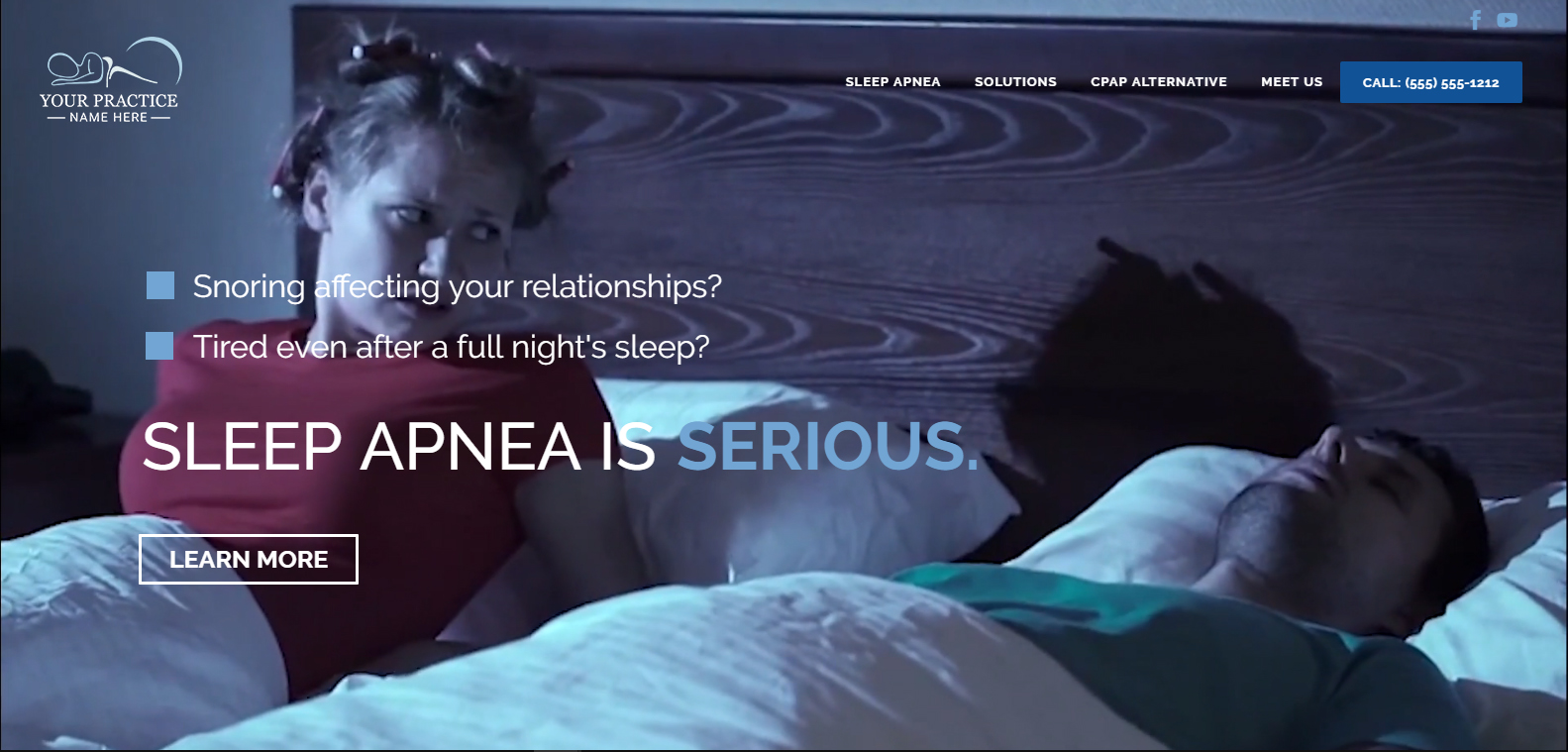
As mentioned in our dental sleep branding article, successfully branding your practice starts with creating a separate, stand-alone brand identity for your sleep practice. Everything from a name, to a logo, to a dedicated website. All of these should be completely independent of your restorative practice.

Once you’ve created a brand identity and website, the real work begins. How do you let potential patients know that you exist and that you offer an excellent solution to their sleep breathing issues?
There are two ways to gain visibility online. The quickest, and most expensive method is to pay for exposure via advertising. Google, Facebook and YouTube all offer comprehensive advertising platforms. We’ll look at these in a future article.
Today let’s focus on the second method, growing organic visibility. Organic visibility is essentially being found by prospective patients online without paying for advertising clicks.
It’s no secret that Google is the 800 pound online gorilla. According to Statcounter, as of November 2018, Google controlled 87% of the U.S. search engine market, with Yahoo, Bing, DuckDuckGo and MSN fighting over the remaining 13%.
Given Google’s dominance, the focus of your online efforts need to be on Google. As a local business, the best place to start is taking control of your Google My Business (GMB) listing. A properly optimized GMB listing can drive a significant volume of website traffic and phone calls. This article provides details on how to optimize your listing and show up prominently in Google’s Local Pack.

After taking care of your GMB listing, you should focus next on your website. One of the many advantages of having a dedicated sleep website is that it doesn’t send mixed signals to Google. When Google’s bots scan your main practice site, they scans content focused on typical dental services and terminology. Content about sleep apnea on a dental site stands out (and not in a good way) to the bots. They’re not sure how to process it, which leads to it being devalued since it doesn’t match the majority of the content on the website. In turn, that can also devalue your main dental content. Google likes to put things into neat, organized units and having differing content confuses the bots and often prevents Google from associating your content with the correct search results for critical keyword terms.
Having a separate sleep website removes the confusion and tells Google that the site is only about sleep, which allows Google to show the site in the correct search results. So Google isn’t indexing your website for implants, ortho, whitening, and a whole mix of dental terms. It is strictly categorizing you as a sleep apnea treatment provider. The result is increased visibility when prospective patients are searching on Google for sleep apnea related terms.
Associating your sleep site with the correct search terms is an important step toward building practice visibility. There are over 200 factors that Google considers when deciding which websites to return in a search results page. A deep dive into Google’s algorithm is beyond the scope of this article, so we’ll look at a few of the more important factors.
First is on-page or technical search engine optimization. That is, what’s happening on your website – within the code. I’m referring to things such as title tags, site maps, internal links, etc. I highly recommend you contact someone with experience in on-page SEO. Getting it right can significantly help, but getting it wrong can be disastrous and require months to recover.
User experience is another important factor. Is your website mobile-friendly, easy to navigate and does it load fast? Google tracks this data, as well as factors such as “time spent on site”. They measure how long visitors stay on your website. The longer a visitor stays, the better. Google assumes that this means that your site has content worth reading and is appropriately related to the search term that brought the visitor to your site. This helps them determine the credibility and relevance of your website.
Pro-Tip: Embed video on your website. According to Forbes, video increases the length of time visitors spend on a website by 88%.
We’ve focused on your website so far, but off-page factors also play a significant role in Google rankings. This starts with the quality and quantity of inbound links (websites that point to your website). If Google sees other websites linking to your website, they assume you must be providing quality content and be an authority on the topic.
Another key off-page factor in your Google rankings are citation signals. A citation is a reference to your practice’s name, address and phone number online. Unlike links, citations do not need to link back to your website. Just having your information listed online gets you credit for a citation. Businesses that are mentioned frequently online are viewed as more credible to Google.
Building organic visibility for your stand-alone sleep practice is a marathon, not a sprint. Each of the activities outlined above are merely the starting points to a much larger, ongoing online marketing effort. We’ve scratched the surface to the online world and haven’t even discussed the impact of video, social media, or how each market is unique.
If you’d like to take a deep dive into the unique organic visibility opportunities available in your market, visit BullseyeDental.com/Call to schedule a complimentary consult.
